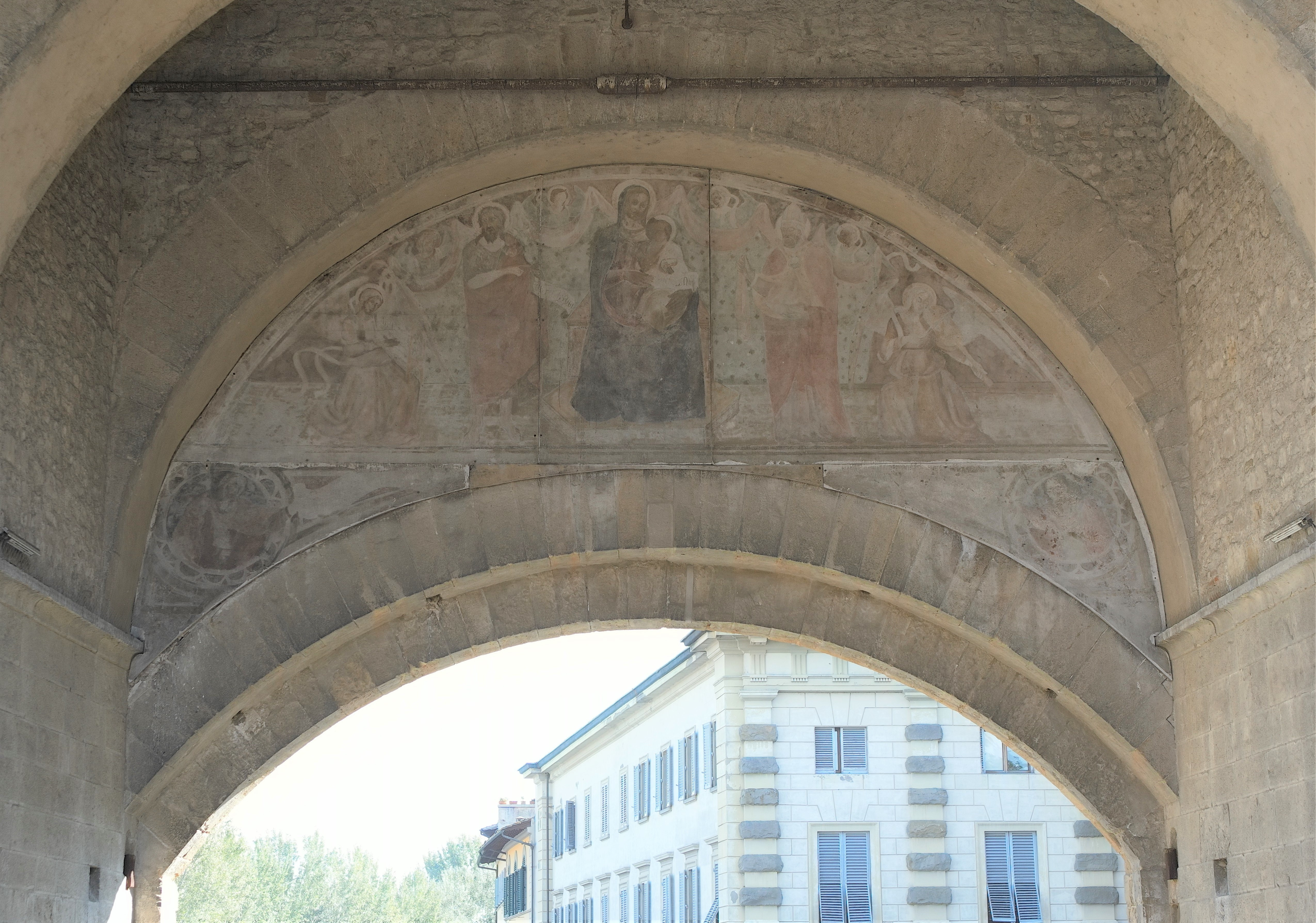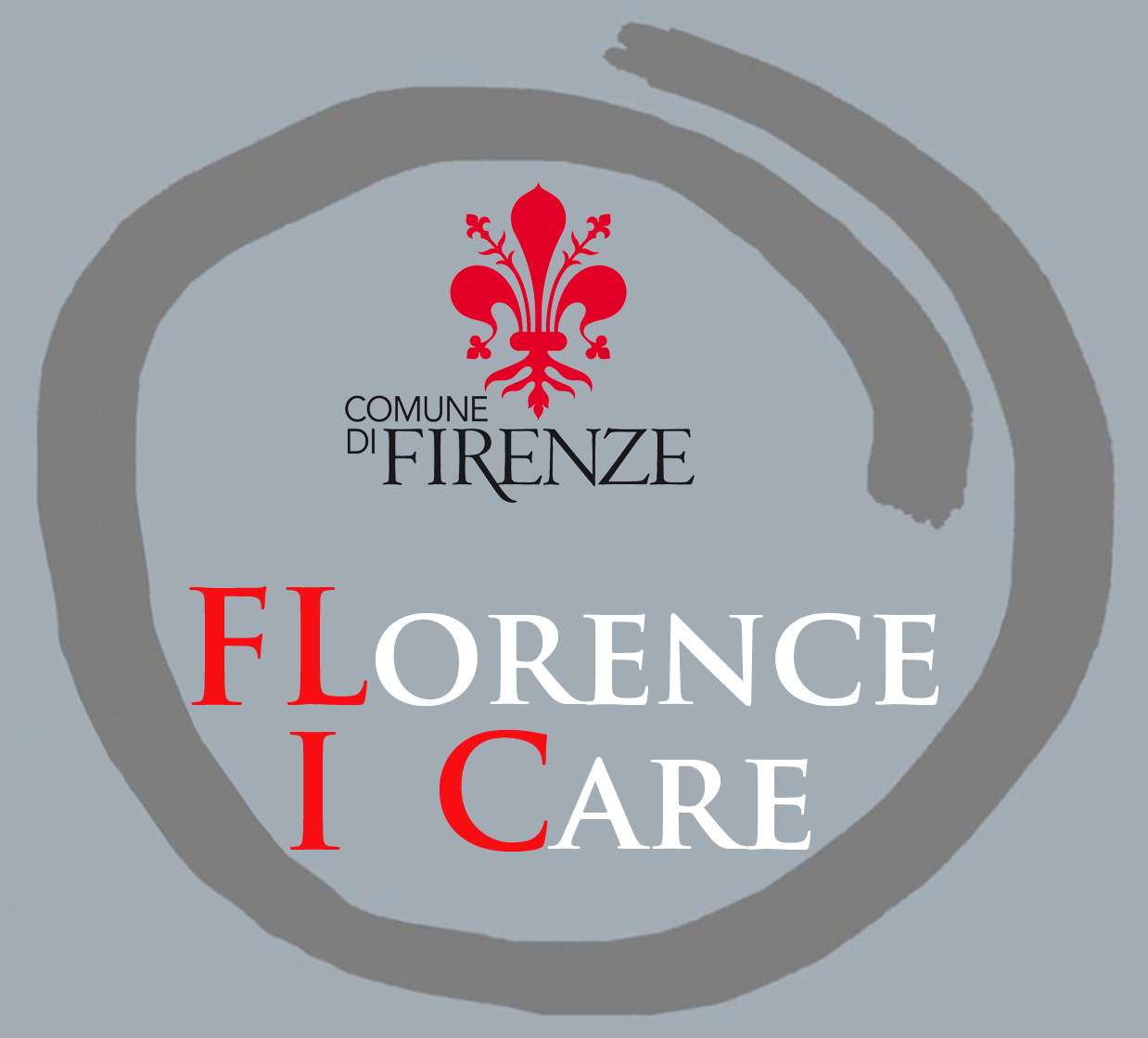TORRE DI SAN NICCOLO - San Niccolò Tower
restauro affresco -restoration of the fresco

La vera terra dei barbari non è quella che non ha mai conosciuto l’arte.
ma quella che, disseminata di capolavori, non sa né apprezzarli né conservarli”.
The true land of the Barbarians is not that one that has never known art,
but that one that, full of masterpieces, does not either appreciate them or preserve them
Marcel Proust
Il nome della torre deriva dall'attiguo quartiere di San Niccolò, da dove partono le Rampe del Poggi, le scalinate che portano al Piazzale Michelangelo. Eretta fra il 1337 e il 1345, era uno dei tanti varchi nella cerchia muraria della città. E' la più alta delle porte murarie che ancora si possono vedere in città, tanto che appare più come una torre piuttosto che una porta, anche perchè oggi risulta isolata mentre in passato era ovviamente inserita nella cerchia muraria (destino condiviso con altre porte superstiti). A differenza di altre torri della città non è stata scapitozzata per questo oggi appare molto più alta delle altre porte cittadine. Nella parte interna, dove è evidente la struttura a tre arconi, uno per piano, nel primo arcone si osserva l'affresco trecentesco staccato di una Madonna con Bambino tra San Giovanni Battista e San Niccolò.
The name of the tower derives from the adjacent district of San Niccolò, from where the Rampe del Poggi, the staircases leading to Piazzale Michelangelo, start. Built between 1337 and 1345, it was one of the numerous gates of the city walls. It is the highest of the wall gates that can still be seen in the city, so much so that it appears more like a tower rather than a door, also because today it is isolated, while in the past it was obiously inserted in the walls ( like other remaining gates) . Unlike other towers in the city, it has not been lowered ( “beheaded” ), for this reason today it appears much higher than the other city gates. In the internal part, where the structure with three arches is evident, one on each floor, in the first arch we can observe the detached fourteenth-century fresco of a Madonna with Child between St. John the Baptist and St. Niccolò.
Valore del’intervento/Value of intervention: € 50.000,00.
Durata dei lavori/ Duration of works: 90 giorni
Tipologia Intervento: le condizioni conservative dell’opera denotano una pellicola pittorica e uno strato materico notevolmente impoverito, dovuto alle condizioni ambientali e alla tipologia di supporto ligneo che risente di queste. Le figure tuttavia conservano ancora un discreto grado di leggibilità e di connotazione espressiva. L’intervento prevede una accurata fase di diagnostica scientifica e documentazione preliminare, la pulitura e il consolidamento dello strato pittorico, la adesione di eventuali distacchi tra supporto ligneo e dipinto, il reintegro di lacune/lesioni e il restauro pittorico.
Intervention typology: the conservation conditions of the work denote a pictorial film and a considerably depleted material layer, due to the environmental conditions and the type of wooden support that is affected by these.The images maintain however a decent level of legibility and expressive connotation. The intervention involves an accurate phase of scientific diagnostics and preliminary documentation, the cleaning and consolidation of the pictorial layer, the adhesion of any detachments between the wooden support and the painting, the reintegration of gaps/damages and the pictorial restoration.
Attrattività/Actractiveness: alta/high
Notizie storico-artistiche: nel lunettone all’interno della porta di San Niccolò, sopra l’arcata interna rivolta ad est, è collocato un affresco staccato risalente al XIV secolo (già reputato di Bernardo Daddi). L’opera raffigura la Madonna con il Bambino tra San Giovanni Battista e San Niccolò (San Nicola di Bari), rispettivamente patrono della città e del rione, affiancati da due angeli musicanti. L’affresco fu restaurato nel 1955.
Historic-artistic information: in the lunette inside the St. Niccolò’s gate, over the the internal arch facing east, a detached fresco dating back to XIV century ( previously attributed to Bernardo Daddi) is placed. The work depicts the Virgin with Child between St. John the Baptist and St. Niccolò ( St. Nicholas from Bari), respectively city’s and district’s patron saint, flanked by two angels musicians. The fresco was restored in 1955.
